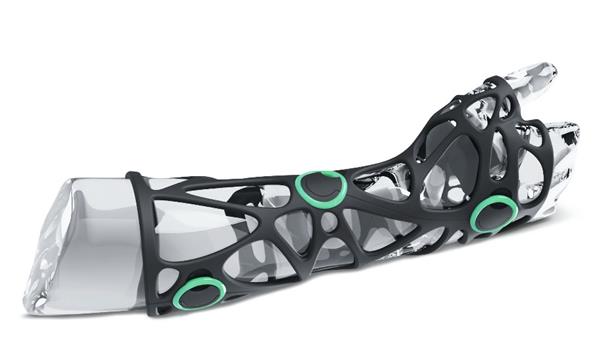One sector that has totally absorbed the goodness of 3D printing technology and is enjoying its facilities is the health sector. Prosthetics, drugs, surgical equipment and replacements, have all seen the immense benefits of 3D technology. Another field of health where this technology is evolving is the healing process.
People will now get a relief from their thick and heavy casts which are itchy and unmanageable. They lead to the stiffness of the limb which has to be followed by another treatment session to restore the strength of the limb.
A Spanish start-up Xkelet has developed this cast known as Xkelet orthosis. These are developed from iPad scans and have also won the coveted Red Dot design award.
The people involved in the development of this cast are Girona, Spain-based Jordi Turi, Ricardo Veiga, Roberto Sancho and Daniel Oliver.
The PUSH acceleration program 2015 has immensely helped in the development of this program. The Xkelet is custom fit and to make the fittings perfect, the XKSS Xkelet 3D scanning app has been developed. This app runs on the iPad and scans the injured limb. The data gathered is stored in the app and then used to make the 3D printed cast.
The Osteoid Medical cast is also made on the same lines but the Xkelet scores higher due to its scalability and ability to be scanned on an iPad. This technology is using iPad whereas most of the other concepts rely on 3D scanning techniques which are difficult to access by all.
The Xkelet casts are 3D printed using an SLS 3D printer. They are made of waterproof and hypoallergenic PA2200 plastic, which has an ISO10993-1 certification of biocompatible.
It took a long time for the designers to derive at this mesh-like lightweight and durable cast design, as they worked on3D printers like Maya, Rhino, Solid Works, and Fusion, to name a few.
Source: 3ders.org
